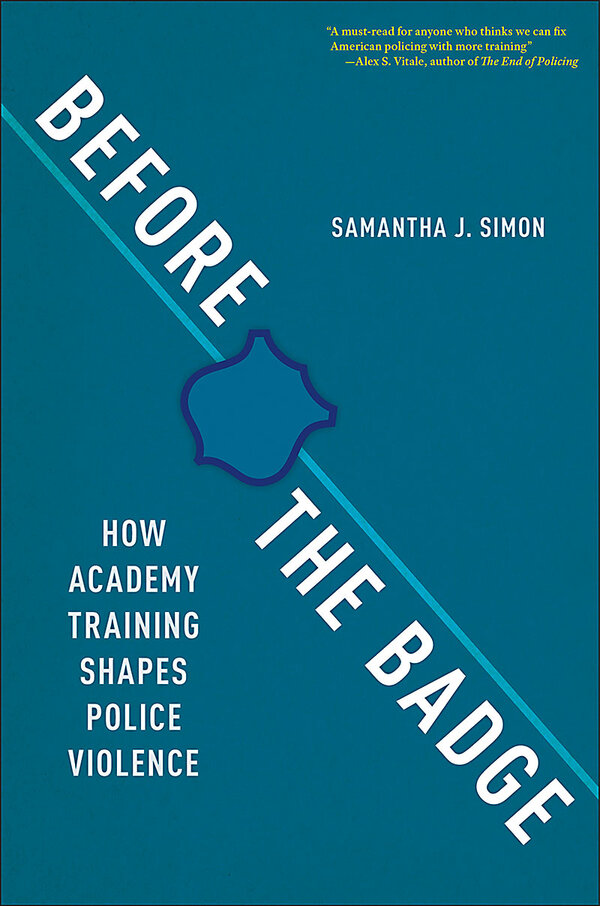Do diverse police departments use less force? She trained with cops to find out.
Loading...
Samantha J. Simon spent a year immersed in police training, which she writes about in “Before the Badge: How Academy Training Shapes Police Violence.” Professor Simon, a sociologist at the University of Arizona, took part in classroom instruction and tactical training in an unnamed Southern state. Her book explores how police academies have responded to growing public outrage over acts of police violence, particularly in communities of color. She finds that efforts to diversify police departments, and to promote verbal de-escalation, run into a deep-rooted warrior mindset in academies that perpetuates a culture of violence.
Dr. Simon argues that the hiring of more women officers and officers of color, while a worthwhile goal, has been insufficient to change the organizational culture of largely white, male-dominated police departments. She spoke recently with the Monitor.
Why did you want to study police academy training?
This was a few years after Michael Brown had been killed [in 2014] and the uprisings in Ferguson [Missouri] had happened. So policing in general, and police use of force, was very top of mind for me and for the country. I felt that [academy training] was an essential part of this story of why police use-of-force patterns are so persistent.
Did you have a set of questions about police training you were trying to answer?
There’s a lot of talk of diversity initiatives ... this idea that if we just hire more women, [and] more officers of color, this will cause the police to police differently and potentially reduce uses of force – or change the way that the police are using force against civilians. I was curious to know, how are these departments strategizing around recruiting women and nonwhite cadets? And is it working?
I was also really interested in de-escalation training [which] was being pitched as a way to address police violence, to potentially curb it, and to provide an alternate route for police officers to engage with civilians.
What is the warrior/guardian framework and how does that inform police training?
A guardian approach to policing might be more of a reactive, community-based approach. A warrior approach to policing would be much more proactive, much more [about] chasing down “criminals or bad guys.” What I found emphasized was this warrior framework [that] includes staying hypervigilant, remaining extremely suspicious of others. Cadets, once they went onto the streets, it was really essential that they be prepared for violence, no matter what. Even in classes that were focused on de-escalation, officer safety was the No. 1 priority. That was emphasized constantly.
What does the diversity recruitment approach get wrong about reform or change in policing and police culture?
I’m not at all arguing that the police should not hire women or people of color. However, I think that it is misguided to pitch demographic diversity as a way to fix an institutional pattern of violence. What I saw in the academy was that everyone needs to align themselves with this worldview that emphasizes violence. Everyone has to demonstrate that they are capable and willing to use violence on the part of the institution. So it doesn’t matter what your gender or race or ethnicity or age are in the academy ... [because] the socialization process is so strong, so effective. I don’t see demographic diversity, at least at the levels that it’s at right now, as being an effective way of curbing police violence.
Is there any evidence that a more diverse police force does a better job of policing communities of color?
There’s mixed evidence. Some of that is complicated by the fact that, for example, Black officers will often be assigned to Black neighborhoods. So when you’re looking at numbers of uses of force or shootings against a certain group of people, that’s complicated by assignment. What we are seeing – and [it’s] pretty consistent in empirical studies – is that the racial and gender composition of leadership does seem to matter, and I think that’s true across different kinds of organizations.
I would ask officers, “Is diversity important? Why is it important? What are the goals?” Often what would be described in terms of hiring nonwhite officers would be that having, for example, Black officers would help the department not look like an occupying force. So it is sort of an optics thing. Not that these Black officers would police any differently. The job is the same. But it would at least look different.
What did you find most surprising about your experience of doing this training?
First, I was pretty optimistic about diversity as a concept. Coming into this, I thought that at a minimum, women might be different in the way that they were approaching this. [But] this environment is just so harsh. ... It’s really intense. And women are put in a bit more of a bind, and so are nonwhite officers, in terms of fitting into this institution because this institution is extremely white. It’s extremely male. It’s extremely masculine. I was surprised by how pessimistic I ended up.









